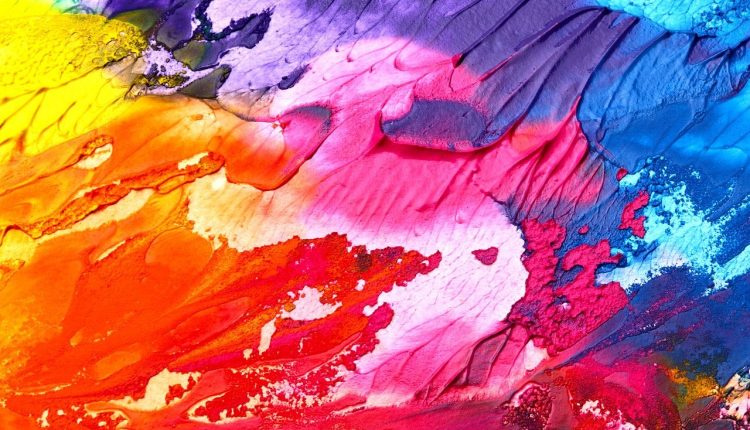Why Videos & Images Are King In Content Marketing, As Explained By Biology
Key Takeaways
- The human brain processes visual content significantly faster than text, with images being processed in as little as 13 milliseconds
- Visual content achieves 65% retention after 3 days compared to just 10% for text-only information
- Social media posts with images generate significantly higher engagement than text-only posts
- Product videos increase purchase intent substantially and landing pages with videos see up to 80% higher conversion rates
- Color psychology and emotional triggers in visual content create deeper brand connections and drive viral sharing
Marketing professionals constantly search for the secret sauce that transforms mediocre campaigns into engagement goldmines. The answer lies not in clever copy or flashy promotions, but in understanding how the human brain actually processes information. Visual content dominates because biology itself favors images and videos over text-based communication.
Research Shows Visuals Process Significantly Faster Than Text
The numbers don’t lie when it comes to visual supremacy in marketing. Social media posts with images produce substantially higher engagement than text-only posts, while visual content proves more than 4 times as likely to be shared across platforms. These statistics reflect a fundamental truth about human cognition that marketers can no longer afford to ignore.
The brain’s preference for visual information stems from millions of years of evolution. Before written language existed, humans relied on visual cues for survival, pattern recognition, and communication. This biological inheritance means that 90% of information transmitted to the brain is visual, creating an automatic advantage for image and video content over traditional text-based marketing approaches.
Modern neuroscience research confirms what marketers have suspected: visuals bypass the brain’s analytical filters and connect directly with emotional and memory centers. That’s why agencies like Media Blaze specialize in using these neurological pathways to create visual content that resonates with audiences on both conscious and subconscious levels.
The Biology Behind Visual Content Supremacy
1. The 13-Millisecond Processing Power of Images
Scientists have discovered that the human brain processes images in as little as 13 milliseconds, making visual communication nearly instantaneous. This lightning-fast processing speed explains why people form first impressions of websites within 50 milliseconds and make snap judgments about brands based on visual elements alone.
The visual cortex occupies approximately 30% of the brain’s surface area, compared to just 8% for touch and 3% for hearing. This massive neural real estate dedication demonstrates how evolution prioritized visual processing for survival and decision-making. Marketing professionals who understand this biological advantage can craft campaigns that work with, rather than against, natural brain function.
2. Why 65% Visual Retention After 3 Days Beats 10% Text Recall
The Picture Superiority Effect reveals a stark difference in memory retention between visual and text-based information. People remember 65% of visual information after three days, while only retaining 10% of purely textual content over the same period. This dramatic difference occurs because visual information gets processed through multiple brain channels simultaneously.
Multimodal learning creates deeper memory encoding by engaging both visual and verbal processing systems. When brands combine compelling imagery with strategic messaging, they create multiple neural pathways for information retrieval. This biological advantage explains why infographics, video explanations, and visual storytelling consistently outperform text-heavy marketing materials.
3. How Visuals Create Emotional Connections
Visual content bypasses the brain’s rational filters and connects directly with the limbic system, which controls emotions and memory formation. This direct pathway explains why a powerful image can evoke immediate emotional responses while text requires conscious processing time. Successful brands use this biological shortcut to create instant emotional connections with their audiences.
Color psychology plays a crucial role in emotional engagement. Red triggers excitement and urgency, blue conveys trust and professionalism, while green suggests growth and harmony. Smart marketers use these evolutionary color associations to reinforce brand messaging and guide consumer behavior without relying on conscious persuasion techniques.
Social Media Engagement Statistics That Prove Visual Dominance
1. Facebook Posts With Images See 2.3x More Engagement
Facebook’s algorithm and user behavior patterns consistently favor visual content over text-only posts. Images generate 2.3 times more engagement than posts without visuals, while videos receive even higher interaction rates. This preference reflects users’ natural tendency to pause scrolling when encountering compelling visual elements.
The platform’s design reinforces visual content advantages through larger display formats and prominent placement in news feeds. Marketers who adapt their content strategy to prioritize high-quality images and videos see immediate improvements in reach, engagement, and conversion metrics across Facebook’s ecosystem.
2. Visual Content Is More Than 4x More Shareable
Shareability represents the ultimate marketing metric, as it indicates content that resonates strongly enough to motivate audience action. Visual content achieves share rates more than 4 times higher than text-based posts, depending on the platform and content quality. This viral potential stems from visuals’ ability to communicate complex ideas quickly and emotionally.
Twitter demonstrates this principle clearly, with tweets containing images receiving 150% more retweets than text-only posts. The platform’s character limitations make visual storytelling even more valuable, as images can convey information that would require hundreds of words to describe effectively.
3. Product Videos Increase Purchase Intent Substantially
HubSpot reports that 54% of consumers want to see more video content from brands they support, while product videos increase purchase intent substantially. Landing pages featuring videos achieve up to 80% higher conversion rates than those relying solely on text and static images. These statistics reflect video content’s unique ability to demonstrate products, build trust, and address customer concerns simultaneously.
Video marketing success stems from its ability to combine multiple psychological triggers: visual processing speed, emotional storytelling, social proof, and detailed product demonstration. This multimedia approach addresses different learning styles and decision-making preferences within a single content format.
The Color and Shape Psychology Behind Viral Content
How Color Choices Drive Emotional Responses
Color psychology operates below conscious awareness, triggering automatic emotional and behavioral responses based on evolutionary and cultural associations. Fast food brands predominantly use red and yellow because these colors stimulate appetite and create urgency. Technology companies favor blue for its associations with trust, reliability, and innovation.
Strategic color selection can increase brand recognition by up to 80% and influence purchasing decisions within seconds of exposure. Successful visual marketing campaigns carefully consider color combinations that align with brand values while triggering desired emotional responses in target audiences.
Shape Psychology Varies Across Cultures
Geometric shapes carry subconscious meaning that influences perception and behavior. Circular shapes suggest harmony, protection, and community, which explains their prevalence in wellness and family-oriented brands. Angular shapes convey strength, efficiency, and masculinity, making them popular choices for technology and automotive companies.
Cultural differences in shape interpretation require careful consideration for global marketing campaigns. While circles generally represent unity across cultures, triangular shapes can symbolize either stability or conflict depending on regional associations and historical context.
Real Business Results From Visual Content Marketing
How B2B Companies Use Visual Storytelling
B2B companies have transformed their marketing approaches by implementing visual storytelling strategies that connect with customers on emotional levels rather than focusing solely on technical specifications. This shift often results in reduced advertising costs while generating additional revenue through improved customer engagement and conversion rates.
The success demonstrates how B2B brands can use visual content to simplify complex concepts and make technical information more accessible. By replacing dense whitepapers with engaging infographics and video explanations, companies improve customer understanding and accelerate sales cycles across multiple market segments.
Educational Companies’ Visual Success in Student Engagement
Educational companies have generated millions of website visitors by creating highly shareable visual content that resonates with their student audiences. Their strategies focus on infographics that simplify complex information and comparison data into easily digestible visual formats.
Campaign success stems from understanding audience preferences for visual learning and social sharing. By creating content that students naturally want to share with friends and family, educational companies achieve organic reach that would cost millions in traditional advertising spend.
Start Creating Brain-Optimized Visual Content Today
The scientific evidence overwhelmingly supports visual content’s superiority in marketing effectiveness, engagement, and business results. Marketers who align their strategies with neurological research and consumer psychology gain significant competitive advantages in crowded digital landscapes.
Success requires moving beyond random visual elements toward strategic implementation of color psychology, shape theory, and emotional triggers. The most effective campaigns combine compelling imagery with data-driven insights about audience preferences and platform-specific best practices.
Implementation doesn’t require massive budget increases, but it does demand a fundamental shift in content planning and creation processes. Brands that prioritize visual storytelling, invest in quality imagery, and test different approaches consistently outperform competitors who treat visuals as afterthoughts rather than core marketing elements.
Ready to transform your content marketing strategy with brain-optimized visual content? Visit Media Blaze to learn how professional visual content creation can improve your brand’s engagement and conversion rates.



Comments are closed.